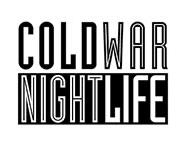On a Gothenburg street, a tourist stopped two men and asked for help taking a picture of her. The men complied, and her photo was captured, smiling for friends, against a wall with some street art. Little did she know that the one who took the snap with her little camera had also shot Iggy Pop, Depeche Mode, John Foxx, Mark Stewart, and Margaret Thatcher.

Brian Griffin was one of the world’s best known photographers – and for good reason. His images were strong, distinctive, and purposeful. Whether shooting a construction site or pop stars, his eyes found the angles that invited questions or deeper responses. A theme of his work was the common worker, and he received high-profile commissions to document those who built Broadgate and the St Pancras Channel Tunnel Rail Link.
Brian’s interest in imagery involving workers led to two iconic album covers for Depeche Mode: one featuring a peasant with a sickle; the other showing a worker with a hammer. The former was so striking that it was selected by Life magazine for the cover of The World’s Best Photographs, 1980-1990.

In all, Brian shot five album covers for Depeche Mode, beginning with their debut, Speak & Spell, and ending with Black Celebration. He constructed a visual identity for the band as they were achieving worldwide fame. Later, when he moved into video, Daniel Miller commissioned him to create the promotional film for “Only When I Lose Myself.” His memories of this side of his activity were captured in the recent book, MODE.
Echo & The Bumnymen were another popular act who leaned heavily on Brian. His images featured on the covers of Crocodiles, Heaven Up Here, and Porcupine. The latter was part of his love affair with Iceland, which led to many trips to the North Atlantic rock. One such adventure was commissioned by Reykjavik Energy, which led to experimental images he called The Water People.

Brian worked in commercial and fine art, but there was no compromise in the quality of his output. Examples can be found in the National Portrait Gallery and the V&A collection. He has been recognised for his body of work by the Royal Photographic Society, which awarded him its Centenary Medal in 2013. He held an Honorary Doctorate from Birmingham City University for his contribitions to the city. His photographs of Depeche Mode continue to find homes on posters in bedrooms around the world.

Brian was a giving and open personality. He never put on airs or closed himself off from fans who wanted to hear his stories or pick up a pointer or two. Sometimes, an obsessive music fan would stake out his street, hoping to catch him for a chat, and he gave them some of his time without reservation. Brian celebrated the craftspeople he worked with, and made sure to give credit to the printers, framers, and book designers who contributed to his projects.
A long-time resident of Rotherhithe, Brian’s flat had a view, across the Thames, of Canary Wharf. As he looked at the bankers over the river, Brian always knew which side he was on: his last exhibition showcased his work for Depeche Mode, with a worker knocking down the Matterhorn. This was one of his favourite images, for its confidence and strength. Its audacity is his legacy.
RIP Brian Griffin (1948-2024)


